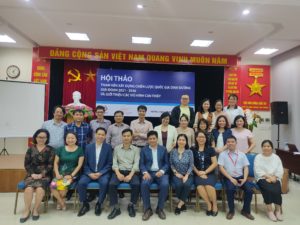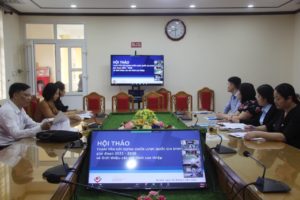
Viet Nam is at the vanguard of baby and infant development among Southeast Asian countries. Results from a recent national nutrition survey show that Viet Nam outperforms other Southeast Asian countries in childhood stunting reduction. Now, stunting prevalence among children under five years old is at an all-time low – 19.6%, lower than the average for the Asia region (21.8%), meaning Viet Nam is ‘on course’ for the stunting target, by 2025. In parallel to this achievement, Viet Nam is also ‘on course’ to reach the exclusive breastfeeding target, with 45.4% of infants aged 0 to 5 months exclusively breastfed [i].

As the first consultation for the strategy development, the workshop shed light on where significant progress has been made and where challenges remain. The survey shows that although there has been an overall reduction in the prevalence of childhood stunting, this topline figure ignores significant inequalities within populations, with vulnerable groups being most affected. For example, stunting prevalence among the Kinh ethnicity is 17.1% (the majority ethnic group of Viet Nam accounting for 85% of the population), while in other ethnic minority groups this number reaches up to 32%. Budget from the central Government for nutrition programmes has gradually reduced in the last 4-5 years which is now having a demonstrable effect on interventions at all levels. At the same time, it would require more time and resources for the provincial Centres for Disease Control to consolidate the organisation, human capacity, and programme implementation for nutrition as they have experienced merging with other centers in the last two years. In the context of the COVID-19 pandemic, the group discussions relayed nutritional well-being for all, particularly for mothers and children under two, has a heightened significance in the face of this new threat both now and in the future.

During the workshop, four nutrition models were introduced to participants from 63 provinces as examples of successful health system strengthening, community mobilisation and multi-sectoral collaboration for nutrition improvement and replication.

